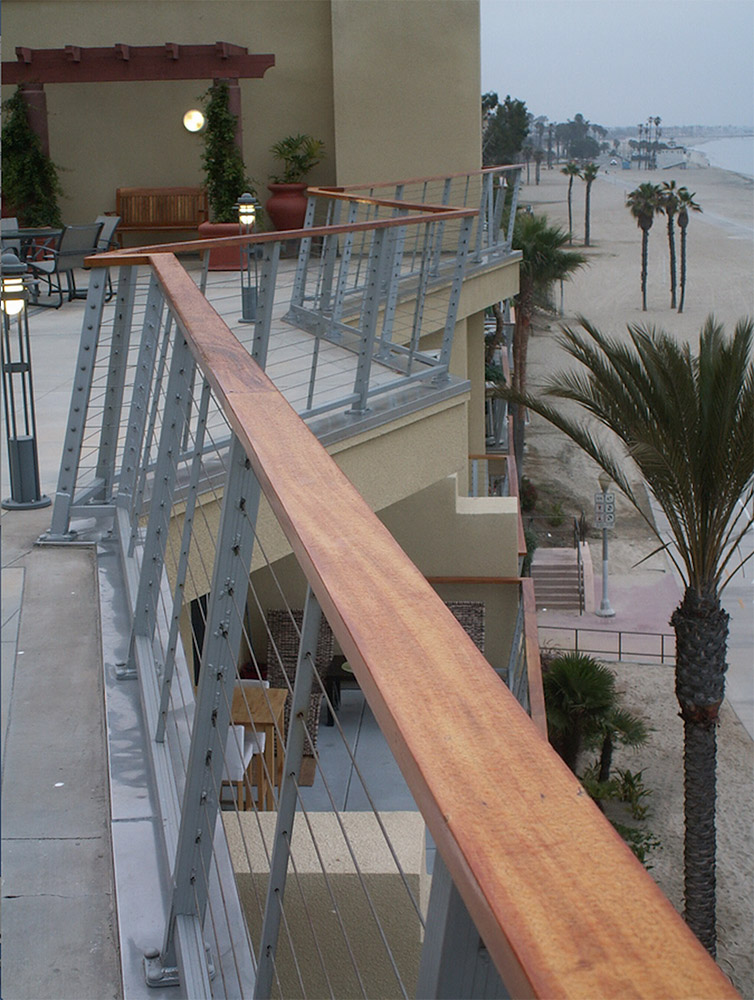History:
The Governor signed SB326 August 30, 2019. This new law will have a substantial impact on Common Interest Developments (CID’s) throughout the State of California. The bill was introduced as a response to the Berkeley balcony collapse at the Library Gardens Apartments on June 16, 2015, when thirteen students fell forty feet from a fifth-floor balcony that failed, killing six and injuring seven.
The cause of collapse was determined by the California Contractors State License Board to be “Dry rot along the top of the joists suggests long-term moisture saturation…of Oriented Strand Board (OSB) in direct contact with the joists. Additional locations of water damage and dry rot were found on the wall OSB sheathing and the face of the doubled deck joists along the deck edge to wall interface by severely rotted structural support joists.” The load of the 13 students were found to be “well within the design limits of the balcony structure”.
What Communities are Affected and What Inspections are Required?
The bill adds Section 5551 and 5558 to the California Civil Code and amends Section 6150 and applies to buildings with three or more multifamily units which contain exterior elevated elements.
The Inspections are “of the load-bearing components and associated waterproofing elements of exterior elevated elements.” The bill defines load-bearing components as “components that extend beyond the exterior walls of the building to deliver structural loads from the exterior elevated element to the building”. Exterior elevated elements are defined as “decks, balconies, stairways, walkways, and their railings that have a walking surface that is elevated more than 6 feet above ground level, and are designed for human occupancy or use, and that are supported in whole or in substantial part by wood or wood-based products.”
Who is Qualified to Complete the Inspections?
Inspections can be completed by any of the following:
(1) Licensed Architect;
(2) Licensed Structural Engineer.
What is the Scope and Purpose of the Inspections?
The purpose of the inspection is to “determine whether the exterior elevated elements are in a generally safe condition and performing in accordance with applicable standards.”
The Inspector shall perform a visual inspection in a “statically significant” random sample of locations to provide 95% percent confidence the sample results are reflective of the whole projects condition.
A visual inspection is defined as “the least intrusive method necessary to inspect load-bearing components, including visual observation only or visual observation in conjunction with, for example, the use of moisture meters, borescopes, or infrared technology.”
However, if the Inspector observes conditions that indicate water intrusion further inspection is required, and the Inspector “shall exercise their best professional judgment in determining the necessity, scope, and breadth of any further inspection.”
What Type of Reporting is Required?
A written report stamped by the inspector and incorporated into the reserve study of the Association and must be maintained for 2 inspection cycles in the Association records and is required to contain the following info:
- Identification of the load-bearing components and associated waterproofing system.
(2) The current physical condition of the load-bearing components and associated waterproofing system, including whether the condition presents an immediate threat to the health and safety of the residents.
(3) The expected future performance and remaining useful life of the load-bearing components and associated waterproofing system.
(4) Recommendations for any necessary repair or replacement of the load-bearing components and associated waterproofing system.
If, after inspection of any exterior elevated element, the Inspector advises that the exterior elevated element poses an immediate threat to the safety of the occupants, the Inspector shall provide a copy of the inspection report to the Association immediately upon completion of the report, and to the local code enforcement agency within 15 days of completion of the report.
What Type of Repairs Must be Completed?
After receipt of the report the Association shall take “preventive measures immediately” including preventing occupant access to the exterior elevated element until repairs have been inspected and approved by the local enforcement agency.
The new law further provides that the continued and ongoing maintenance and repair of the load-bearing components and associated waterproofing systems in a safe, functional, and sanitary condition shall be the responsibility of the Association as required by the association’s governing documents.
When are the Inspections Required?
The initial inspections must be completed by 1/1/2025 and every nine years thereafter.
Important Considerations:
- There is a significant risk to waiting as the statute permits local governments or enforcement agencies to enact an ordinance or other rule imposing requirements greater than the statute.
- The statute is vague and shifts much of the responsibility for compliance with the I These professionals who are required to stamp the report will more than likely require intrusive/destructive testing to comply with the intent of the statute.
- The reports will become part of the permanent records of the Association, reports indicating potential issues with construction may negatively impact the value of the community.
- Inspect early
- to reduce and mitigate damage
- avoid the last-minute rush that will occur near the deadline
- allows time to bring SB800 claims for defects discovered
Ritchie Lipson, Esq.*
Director of Client Relations
*ADMITTED IN ARIZONA AND DISTRICT OF COLUMBIA ONLY

Ritchie Lipson is the Director of Client Relations for Kasdan LippSmith Weber Turner LLP. For the past 20 years, Lipson has worked with Commercial investors, Municipalities, School Districts, Homeowner Associations and Residential Property Owners, to assist in the fair resolution of their claims for defective construction. During that period, he has been involved in over 70 cases, including several class action lawsuits, recovering over $123 million for clients. For those cases venued in Arizona, Ritchie acted as counsel along with others in his firm. *ADMITTED IN ARIZONA AND DISTRICT OF COLUMBIA ONLY

